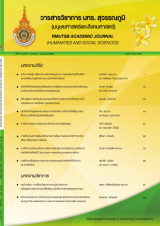Move analysis of conference proceedings abstracts across disciplines among Thai researchers: A case of education and health sciences
Main Article Content
Abstract
This small-scale study investigates the rhetorical structures of conference proceedings abstracts (CP abstracts henceforth) among Thai researchers based on Hyland’s framework (2000). In order to find out what move sequences and move frequency are, CP abstracts across two disciplines, namely education (ED) (N=14) and health sciences (HS) (N=14) were randomly selected from the proceedings of a graduate research conference. The results indicated that purpose (P), methods (M), and product (P) moves were obligatory, and introduction (I) and conclusion (C) moves were missing in the CP abstracts in education. On the other hand, conclusion move was conventionally employed, and introduction move was optionally used in the CP abstracts in health sciences. Additionally, the most dominant sequence between these two disciplines was different. That is to say, P-M-P was most frequent in the former field, whereas P-M-P-C was most prevalent in the latter field. It is hoped that the findings would be useful for Thai researchers in the above-mentioned disciplines to understand the rhetorical organization of abstract writing and be able to write the successful CP abstracts in their selected conferences.
Article Details
How to Cite
Ninpanit, S. (2017). Move analysis of conference proceedings abstracts across disciplines among Thai researchers: A case of education and health sciences. RMUTSB ACADEMIC JOURNAL (HUMANITIES AND SOCIAL SCIENCES), 2(1), 109–115. retrieved from https://so05.tci-thaijo.org/index.php/rmutsb-hs/article/view/97884
Section
Research article


